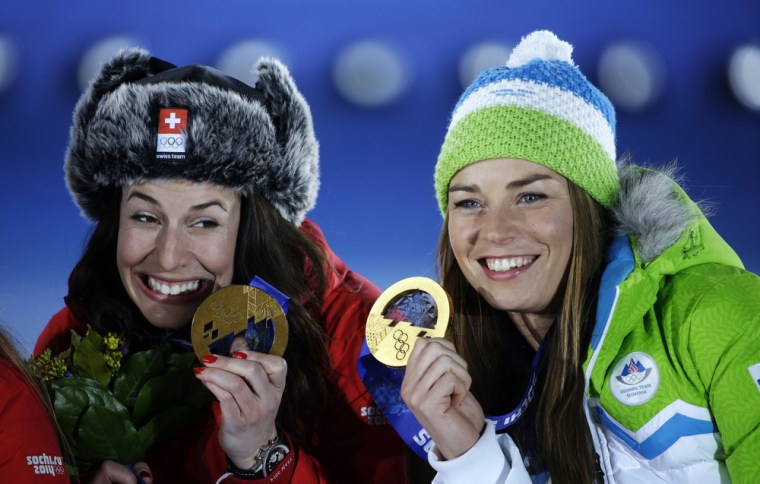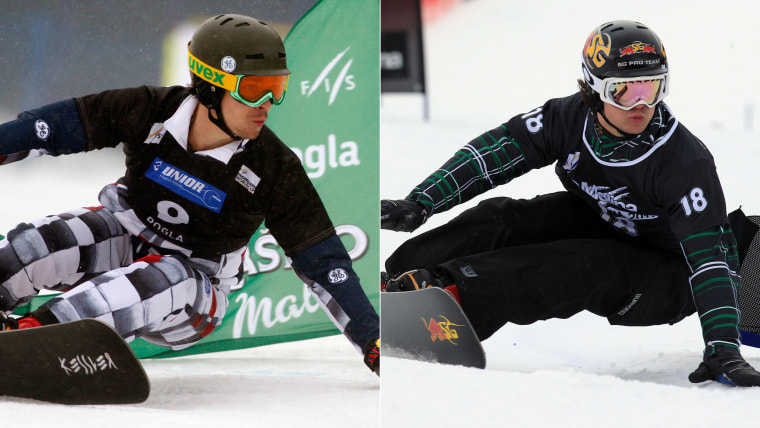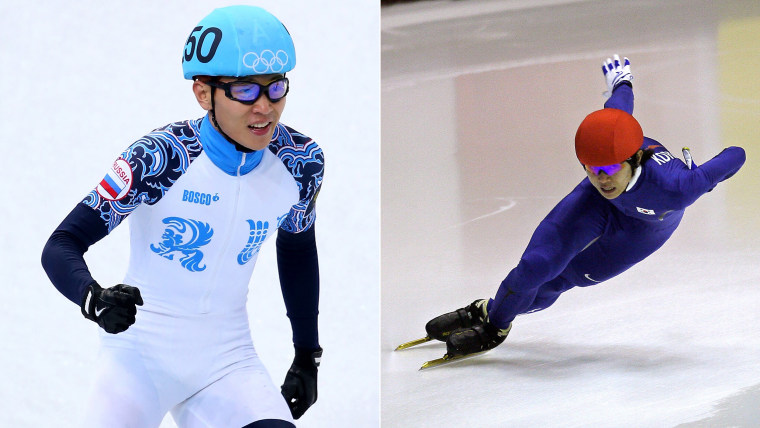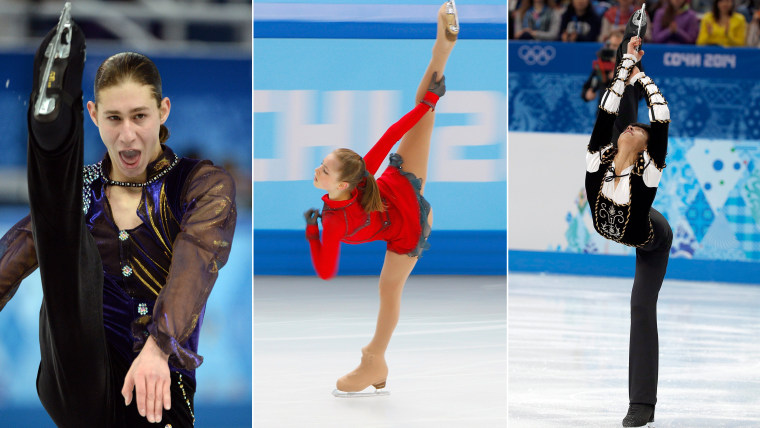Figure skating is on many Olympic fans' must-watch list, and it's not just because of the spangly costumes: The display of flexibility and grace is remarkable. But just HOW do they do it? If that question — and many more — have been plaguing you, read on! And ask us yours on Facebook or tweet at @todayshow with the hashtag #BurningQuestions!
Yeeowch! How are figure skaters so flexible?
You mean not everyone can perform the standing splits with one skate on the ice and the other over their head?
There are two main reasons why skaters have such flexibility: Stretching exercises and years of practice from a very young age.
For someone to boast the flexibility of an Olympian skater, he or she probably needs to begin while in preschool and definitely before school age, said former Russian Olympian pairs skater Vadim Naumov, who now coaches elite athletes in Connecticut.
“It’s so much easier to develop when you’re young, when the muscles and ligaments are very flexible and the bones are not very dense. It’s not so painful at this age,” he said. “When you try to start developing this at 9, 10, 11-year-old, it’s already too late.”
By that age, he explained, skaters would have to devote more time than they would like on flexibility exercises to regain the bend their bodies had boasted only a year or two earlier.
“A little bit of genetics helps, but really, not so much,” Naumov said.
Adding other disciplines like gymnastics, which emphasize flexibility along with strength, also can help.
How often is there a tie for gold?
When Slovenia’s Tina Maze and Switzerland’s Dominique Gisin tied for the gold medal with identical winning times in the women’s downhill in Sochi on Wednesday, it marked the first time that has ever happened in an Olympic Alpine skiing event. There had previously been two ties for silver, but never gold.

It also marked the first time there has been a gold-medal tie in the Winter Olympics since 2002 in Salt Lake City, when Norway’s Frode Estil and Thomas Alsgaard tied for the gold in cross-country skiing. In 1998, Canada and Italy shared the top spot in the two-man bobsled. A tie also once prompted a rules change, as Germany and Italy tied in the two-man bobsled in 1968, but Italy was given the gold because it had the fastest heat time. Now if two teams have identical times in the finals, they share the medal.
More precise timing methods have helped, too. And these days, when there is a tie for the gold medal, no silver medal is awarded, and a bronze is given to the next-highest finisher, which makes for an odd-looking photo of the medalists on the podium. Technically, a winner could have been determined between Maze and Gisin in the women’s downhill if they had gone to thousandths of a second, but by rule the time only goes to hundredths of a second and both skiers had a time of 1 minute, 41.57 seconds.
Luge, bobsled, skeleton: What's the difference? More burning questions answered
Maze and Gisin won't have to share one gold medal: The Sochi Organizing Committee has 46 extra medals made for the games, according to The Wall Street Journal.
Can athletes really switch countries to compete in the Olympics?
Yes! Whether it’s Korean speed skater Ahn Hyn-Soo now competing for Russia under the name Viktor Ahn, or American snowboarder Vic Wild now competing for the host nation in Sochi, so-called “passport Olympians” have popped up all over these Games.

Athletes switching nations to compete is not new, but is still somewhat uncommon on the U.S. Winter Olympic team. The U.S. team in Sochi includes only one pair of athletes born in Canada — skier Laurenne Ross and curler Debbie McCormick.
Access to more financial support and better training facilities can be another reason for switching nationalities. Wild claims he wasn’t able to afford to train at a high level in the U.S., so he became a Russian citizen in 2012 after marrying fellow snowboarder and Russian citizen Alena Zavarzina. He then became sponsored by the government, giving him the money to train for Sochi.
Many athletes try to capitalize on their family’s heritage by tracing part of their ancestry back to the nation for which they wish to compete. It can allow them to attain a passport that gives them dual citizenship.

It also helps to just be talented in a sport that another nation has a dearth of talent in. Many countries will speed up the usual requirements for nationalization, claiming the athlete offers exceptional services to the state. That’s how Hyun-Soo became Viktor Ahn after winning medals for South Korea in the 2006 Olympics, and that’s how many Kenyan distance runners and Bulgarian weightlifters have wound up competing for other nations in the Summer Olympics.
Hunger Games? Your Opening Ceremony burning questions answered
Sometimes, sheer persistence will do the trick. Isabella Tobias, an ice dancer from Manhattan, fought to get Lithuanian citizenship because she had trouble finding male ice dancing partners in the U.S. In 2010, she began skating with Lithuanian Deividas Stagniunas, and lobbied for citizenship. She had to take a test about Lithuanian history and had thousands of Lithuanians sign a petition on her behalf because she has no Lithuanian ancestry. Only three months before the Games in Sochi, the Lithuanian president reversed an earlier decision and granted her citizenship.
